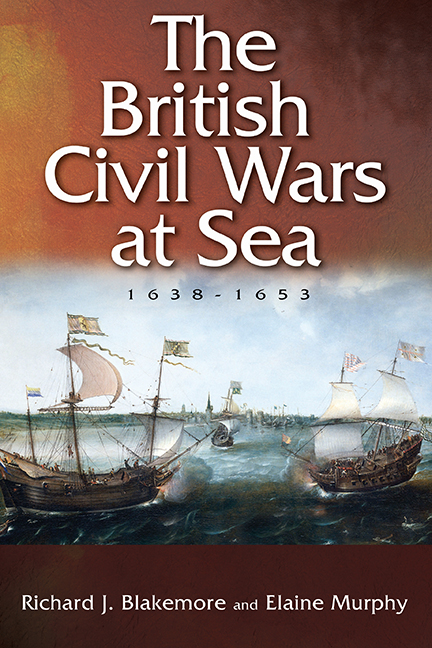Book contents
- Frontmatter
- Dedication
- Contents
- List of Illustrations
- Preface and Acknowledgements
- List of Abbreviations
- Map
- Introduction
- 1 Warfare at Sea in the Early Modern Period
- 2 The Outbreak of War, 1638–1642
- 3 The War at Sea, 1642–1646
- 4 Parliament's Navy, 1642–1646
- 5 Royalist, Confederate, and Scottish Naval Efforts, 1642–1653
- 6 Revolution, 1647–1649
- 7 Conquest, 1649–1653
- Conclusion
- Appendix 1 Timeline of the Civil Wars at Sea, 1638–1653
- Appendix 2 Parliamentarian Fleets, 1642–1649
- Bibliography
- General Index
- Index of Ships
3 - The War at Sea, 1642–1646
Published online by Cambridge University Press: 19 July 2019
- Frontmatter
- Dedication
- Contents
- List of Illustrations
- Preface and Acknowledgements
- List of Abbreviations
- Map
- Introduction
- 1 Warfare at Sea in the Early Modern Period
- 2 The Outbreak of War, 1638–1642
- 3 The War at Sea, 1642–1646
- 4 Parliament's Navy, 1642–1646
- 5 Royalist, Confederate, and Scottish Naval Efforts, 1642–1653
- 6 Revolution, 1647–1649
- 7 Conquest, 1649–1653
- Conclusion
- Appendix 1 Timeline of the Civil Wars at Sea, 1638–1653
- Appendix 2 Parliamentarian Fleets, 1642–1649
- Bibliography
- General Index
- Index of Ships
Summary
As they had in the first four years of conflict, private naval enterprise and siege operations came to characterise naval warfare between 1642 and 1646. Just as on land, the conflict at sea was largely regionalised, with the fortunes of each side ebbing and flowing as the war progressed. Each of the combatants made extensive use of ships with letters of marque and hired merchantmen to aid their cause at sea: even parliament, with their control of the navy, still relied on large numbers of privately owned vessels each year to bolster their maritime forces. Siege warfare, rather than large set-piece battles, dominated much of the military campaigning each year. Writing in the 1670s, but drawing heavily on his experiences during the 1640s, Roger Boyle, the earl of Orrery, wrote that ‘we make war more like foxes than lions and you will have twenty sieges for every battle’. Most of the key sieges that took place in these four years occurred along the coast, and the support that garrisons received by sea, or the prevention of seaborne relief from getting through, often determined the fate of beleaguered coastal outposts. In order to assess the conduct and wider significance of the war at sea between 1642 and 1646, this chapter will focus on the activities of privateers and the naval dimension of the key sieges that took place in this period.
Opening moves, September 1642–September 1643
The navy proved its worth and loyalty to parliament in the early months of fighting, by helping to ensure that key coastal outposts did not fall under royalist control. Important ports such as Bristol, Milford Haven, and Plymouth supported parliament at the outbreak of the war. The presence of men-of-war and the actions of energetic officers prevented the king's supporters from gaining footholds in a number of regions: for example, the ships sent to Sir John Hotham at Hull helped to drive royalist forces away from the town, and the naval blockade of Portsmouth proved to be effective, with the garrison surrendering to parliament in early September 1642. One daring officer even used some longboats at night to steal the Henrietta Maria pinnace from its anchorage under the guns of the city.
- Type
- Chapter
- Information
- The British Civil Wars at Sea, 1638–1653 , pp. 58 - 83Publisher: Boydell & BrewerPrint publication year: 2018



